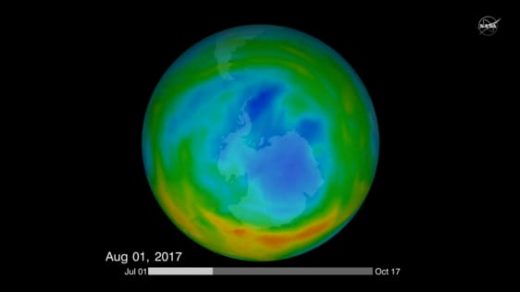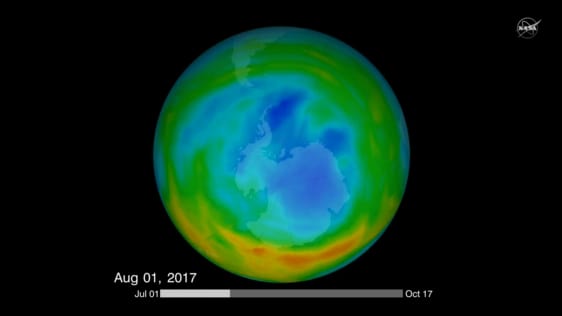NASA sees direct proof that the hole in the ozone layer is slowly shrinking
Good news for the planet for once: NASA scientists have found direct proof that the hole in the ozone layer is shrinking. In 2017, NASA reported that the size of the hole in September was at its smallest since 1988. Now thanks to some nifty instruments strapped aboard the Aura satellite, they have found incontrovertible evidence of it, showing that chlorine from chlorofluorocarbons (CFCs) is diminishing in the ozone hole, and that ozone depletion is slowing down as a result.
Since the ozone layer protects Earth and its inhabitants from ultraviolet rays that cause skin cancer, cataracts, crop damage, and many other problems, this is clearly good news. The ozone hole was at its biggest in 2000 at 11.5 million square miles, per CBS. But thanks to the world banding together to complete the work laid out in the 1987 Montreal Protocol on Substances that Deplete the Ozone Layer, scientists think that, by 2070, the hole can recover to the levels of 1980, as CFCs continue to reduce.
Don’t pat yourself on the back too hard, though, because the work is far from over. While the hole is shrinking, this doesn’t mean it’s time to spritz your hair with CFC-laden Aquanet while throwing styrofoam out the window of your leaded-gas car or anything. Instead it shows that, perhaps if we all work together, we might be able to reverse some of the damage that humans have caused to this planet, which, despite NASA’s best efforts, is still the only planet we have to live on.
Read the full study here.
Fast Company , Read Full Story
(36)



